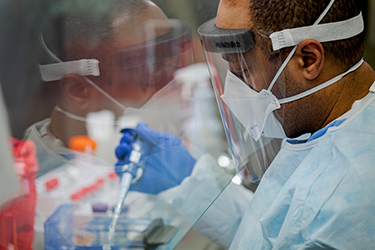Despite the many lessons of the COVID-19 pandemic, fewer than half of U.S. states are highly prepared to respond to public health emergencies, according to a new report.
Released March 14, Trust for America’s Health’s “Ready or Not 2024: Protecting the Public’s Health from Diseases, Disasters and Bioterrorism” report evaluates the strength of public health systems and emergency preparedness measures at the state level.
Twenty-one states and Washington, D.C., showed high-tier performance, 13 were ranked middle tier and 16 were low tier. The high-tier states scored well on measures such as incident management, water security, workforce resilience, infection control, patient safety and health security surveillance.
Top-ranked states were located throughout the U.S. — from Alaska and Washington in the west to Maine, Vermont, Massachusetts, Connecticut, New Jersey, Virginia, North Carolina, Georgia and Florida in the east. Other states in the top tier for public health emergency readiness were Arizona, Colorado, Kansas, Mississippi, Nebraska, Ohio, Pennsylvania, Rhode Island, South Carolina and Tennessee.
Among their accomplishments, many states have bolstered their public health workforces. Thirty-nine states are now a part of the Nurse Licensure Compact, which allows nurses to use one license in all states that are part of the agreement. Allowing health care professionals — and in particular, nurses — to easily and quickly move from state to state for work helped save lives during the early years of the pandemic.
“During a major public emergency, day-to day workforce shortages in the health care system are exacerbated,” Dara Lieberman, MPP, the trust’s director of government relations, told The Nation’s Health. “The Nurse Licensure Compact is a way that health care facilities can bring nurses across state lines relatively faster.”
Additionally, all but four states — California, Missouri, Utah and Virginia — have written plans that prepare for six- to eight-week expansions of public health laboratory capacity in the event of a public health emergency or outbreak. The plans are important when handling simultaneous emergencies or large-scale outbreaks, the report said.
Most U.S. states are keeping up with key standards and practices that assure the quality of their public health and preparedness work, the report found. Forty-three states and D.C. were accredited by either the Public Health Accreditation Board or the Emergency Management Accreditation Program as of January, with 29 of them accredited by both. Seven states — Alaska, Hawaii, New Hampshire, South Dakota, Texas, West Virginia and Wyoming — lacked accreditation from either body.
On the funding side, a majority of states increased or held steady on public health funding in fiscal year 2023, but at least 11 states reduced it. Unfortunately, now that increased federal and state funding for the pandemic has ended, many health departments are facing budgeting cliffs, TFAH said.
Another area that needs to be shored up is paid time off for the U.S. workforce. Temporary sick leave protections put into the place during the early years of the pandemic helped reduce COVID-19 transmission, research shows. But many workers, such as those in food service, lack such leave on a regular basis, which means they work while ill.
“That is an easy way for foodborne illness to spread, if a worker has to go to work sick,” Lieberman said. “It’s really important to be able to access preventative services, to be able to access medical care, and a lot of people have to miss a paycheck or take time off work if they’re going to do that or to take care of a sick family member.”
The TFAH report provides policy recommendations for Congress to improve preparedness, especially in the low-ranking states. It called for policymakers to provide at least $1.1 billion a year for vaccine infrastructure and delivery, implement job-protected paid leave and prioritize rebuilding public trust in public health agencies and leaders.
“These policy changes and investments are needed before the next emergency comes, not just after the outbreak or disaster,” Lieberman said.
Photo caption: A microbiologist works with a virus in Pennsylvania in 2020. (Courtesy Pennsylvania office of governor via Flickr Creative Commons)